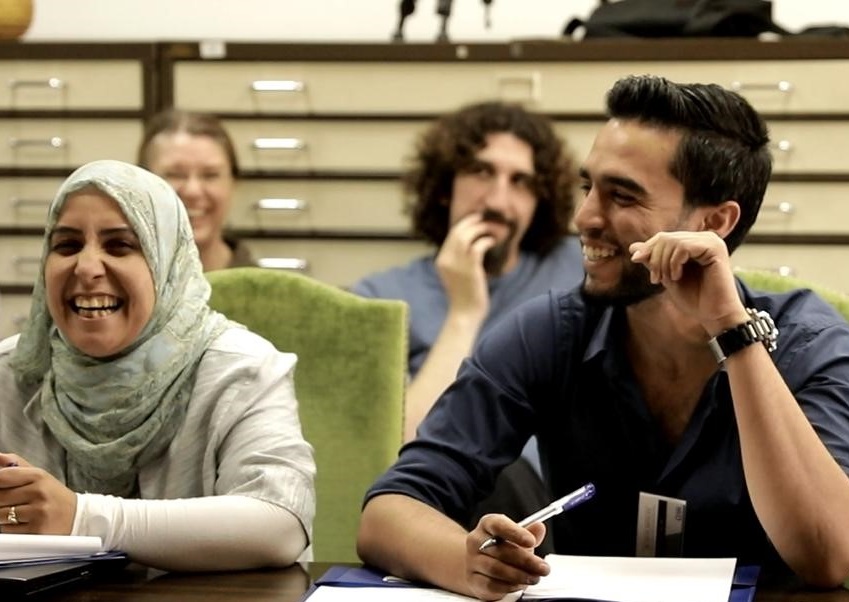On July 18, 2018, the ACOR Photo Archive team held the workshop, “Archival Methods: 2nd Annual Skill-Sharing Workshop for Libraries, Archives and Museums”. Current and former Project Archivists, Jessica Holland and Steve Meyer shared their reflections from this successful workshop. All Photographs were taken by Njoud Abu Hweij unless otherwise stated.
Since we started our ACOR Library Photographic Archive project (ACOR Photo Archive for short) in the fall of 2016 we have reached the milestone of 11,000 photos available for free online. ACOR’s 100,000-strong image archive holds unique views of both famous and relatively unknown archaeological sites across Jordan, as well as high-quality anthropological photographs. The threat to cultural heritage posed by photograph decay, as well as threats to the physical structures themselves due to conflict and development, makes this a pertinent moment to utilize digital technologies for preservation. The ACOR Library Photographic Archive Project is made possible through an American Overseas Research Centers grant from the U.S. Department of Education (Title VI).

ACOR Photo Archive, https://acor.digitalrelab.com
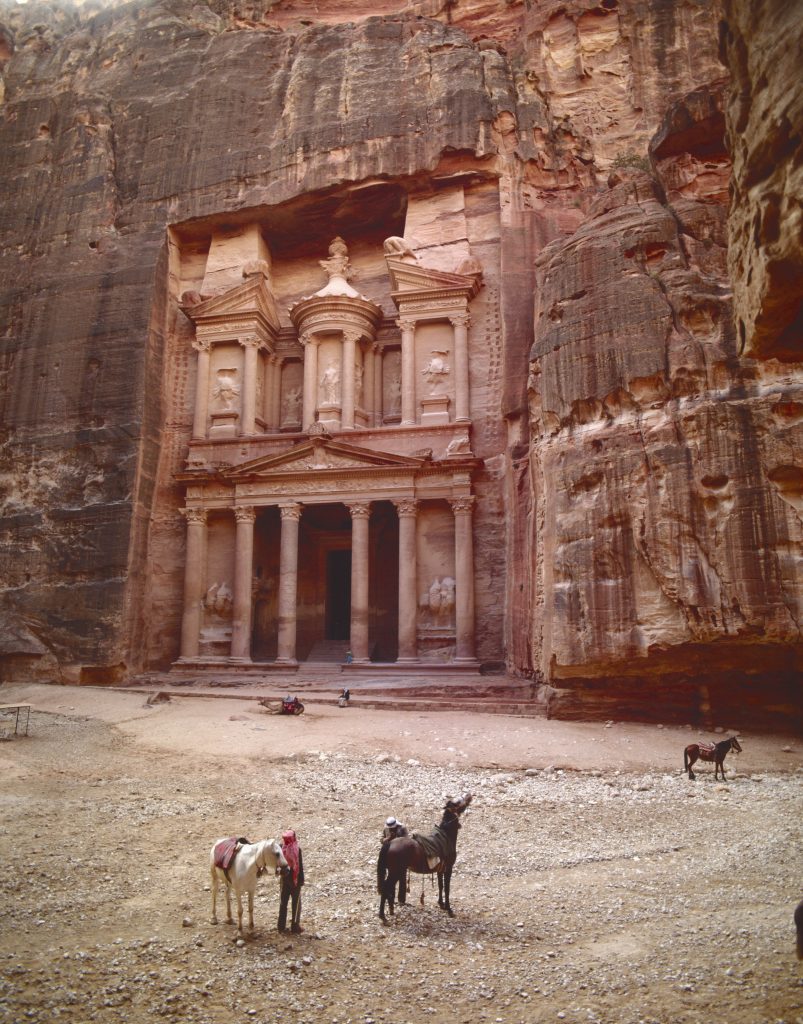
Earlier this summer, the ACOR Photo Archive project team held its 2nd skills-sharing workshop on Archival Methods, bringing together participants from libraries, museums and archives from across Jordan, and from further afield, including Cairo and Ramallah. We identified the need for networking space amongst institutions running archival projects in Jordan. This workshop focused on a common concern for every archival digitization project: How to achieve the best quality scans /copies of original archival materials in the most sustainable way? Digitization can be complicated; there is equipment to learn how to use, software to master and a whole host of details to keep in mind. Although it can appear daunting it’s not nearly as overwhelming as it seems at first.
Steve Meyer, our Project Archivist from September 2017 to July 2018, formed a training double act with our Archival Assistant Razan Ahmed, working together to reduce the complexities of the digitization process down to simple steps that would be easy to replicate at any institution, no matter the size of the collection (or the archival team!).
One of the trickiest aspects of digitization is color calibration – as the digitized images need to look like the originals. Scanning technicians need to have a setup that is color-accurate for the entire workflow process, from what is seen on the monitor while creating their master TIFF scan to every derivative version down the line that researchers will see. The workshop focused on the use of photo industry standard color/grayscale charts for prints and IT8 charts for slides. Steve and Razan then went through the steps to create profiles for slide film and photographic prints that ensure high levels of accuracy. For scanning technicians it’s also crucial to know that your screen is showing you the correct colors. By using a monitor calibration device, in our case a Spyder5Pro, every week, it ensures that any changes to the monitor are kept in check and technicians can scan with the assurance that what they are viewing is truly what they should be seeing.
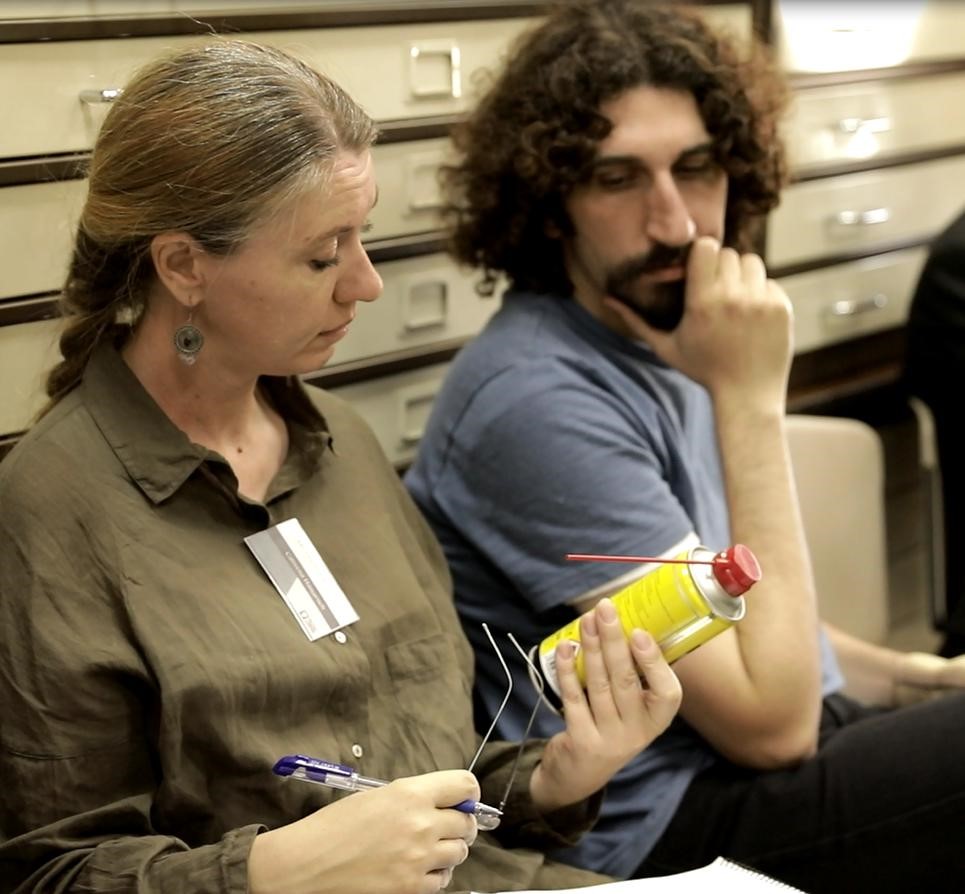
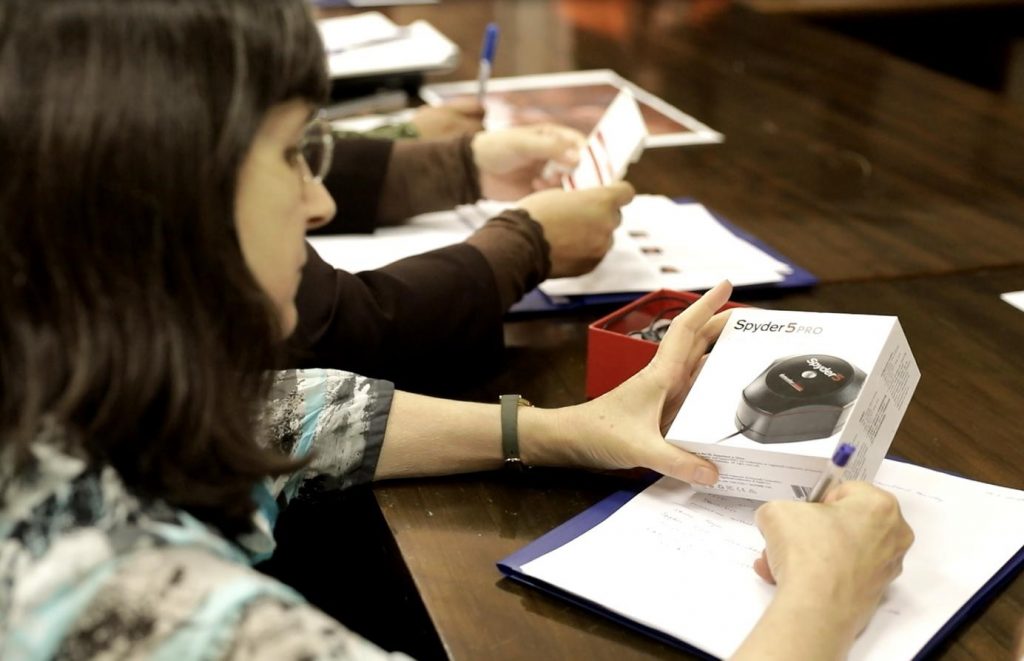
Participants inspecting equipment used in scanning and calibration process during Steve and Razan’s presentation.
Later in the day, Samya Khalaf, archival Project Coordinator and Assistant Librarian, led participants through her research methods for transforming metadata into information with the potential to help viewers unlock latent histories within image collections. Metadata can be one of the biggest obstacles facing digitization projects, and at ACOR we work on the principle that a small amount of reliable information is better than a larger amount of vague information which may be misleading. You can read more about Samya’s methods here.
The big questions of archiving
Samya’s presentation generated a lively debate that expanded outside of the field of information-gathering and got at the heart of the issues brought up during the transformation of material archives into digital ones. These include, what are the best practices for acquisition of archival material? Can the threat of the destruction of documents of significant historical value held by private individuals justify efforts to persuade them to donate their collections to library or archival institutions with controlled environments suitable for preservation? Should everyone have access to all archival material? What is the role of the state, private institutions and/or NGOs in the protection of historical documents? What are the ways in which institutions can collaborate in order to benefit from each other’s expertise and resources, whilst still keeping their unique identities? Although by no means were all these questions answered on the day, we found ourselves reflecting on the archival principle of providing as much access as possible to all, as well as recognizing the need for sensitive material to be designated as such by the archivists and perhaps restricted from public view. In any case, these questions led us to explore more about each other’s projects and plan how we could collaborate and exchange technical knowledge in the future.
Collaboration + Community
The huge advantage of being able to gather 25+ participants from 12 institutions was the opportunity to make connections with others who are breaking new ground in the transformation of archives in the digital age. We found that we were facing many of the same questions, the same demands to acquire new digital skills and to equip our archives with new technologies. We resolved to share freely the learning of established projects, and to support those embarking upon new projects.
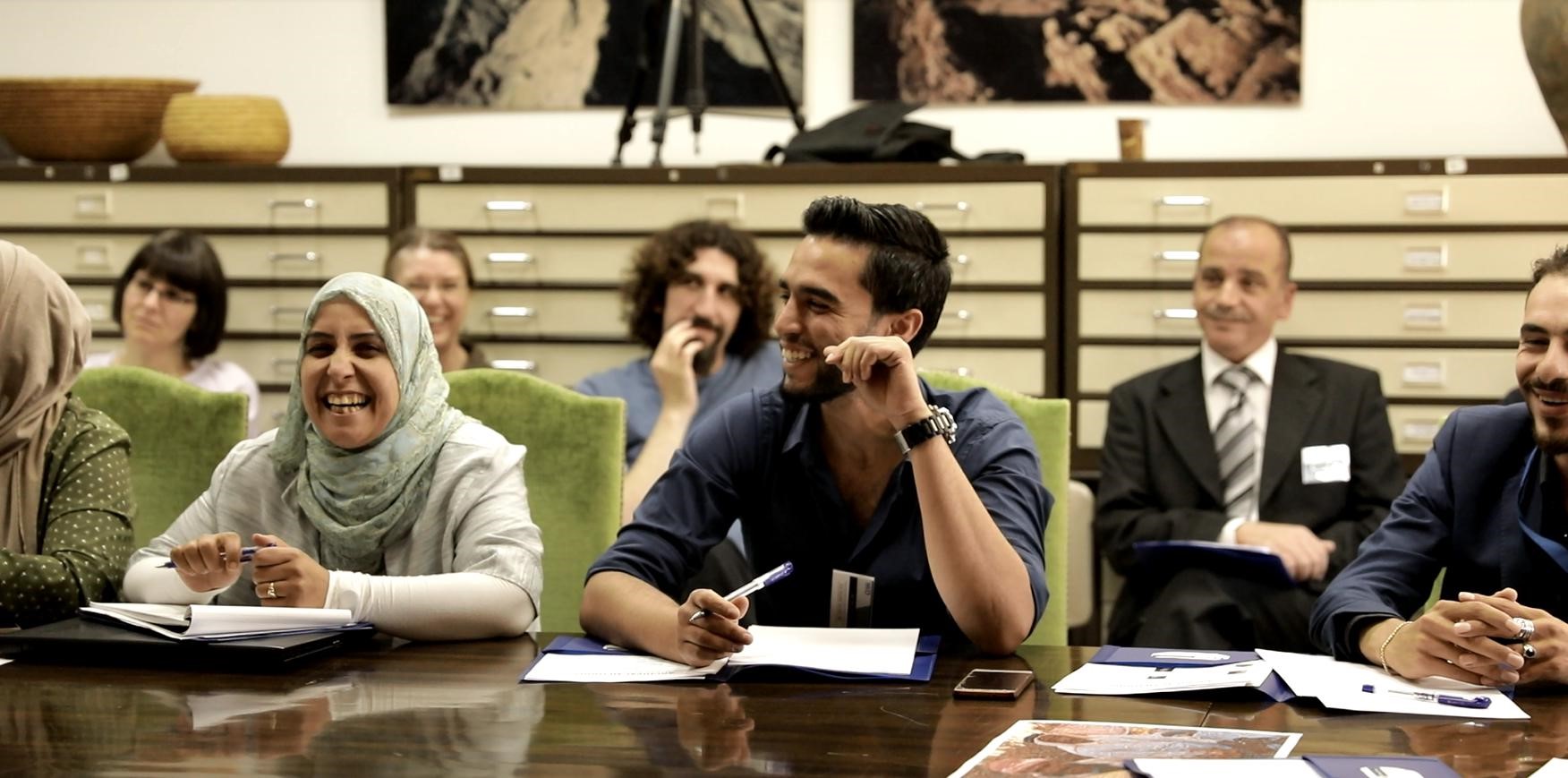 Participants sharing a laugh during the training at ACOR.
Participants sharing a laugh during the training at ACOR.
We had the chance to swap notes on photograph and document archiving at the Jordan National Library, where we particularly enjoyed seeing their book scanning set up and map imaging copy stand. ACOR trainers became the trainees at the Documentation of Objects in Archaeological Museums (DOJAM) project of German Protestant Institute of Archaeology (GPIA), based at the Amman Citadel / Jabal al Qal’a. Jutta Haeser and Hashem Kries demonstrated their exciting object photo studio and 3D scanning set up, on a very hot day following the workshop. We look forward to hearing project updates from other national institutions that we were thrilled could join us – including the Department of Antiquities, University of Jordan and Yarmouk University Libraries, as well as American Research Center in Egypt, Darat Al Funun, and the Palestinian Museum.
 Participants and ACOR Photo Archive Staff gather for a photo at the end of the day.
Participants and ACOR Photo Archive Staff gather for a photo at the end of the day.
Free Resources
If you’re interested in digital archives, please check out our training materials (most documents are in English and Arabic) which are free to download. While there are numerous instructional materials in other languages, a lack of Arabic content limits educational possibilities for archive professionals in the Middle East. As ACOR makes progress on its own photo archive it’s looking for ways to bridge that language barrier and make digitization training more accessible in the region.
Find out more…
If you’d like to receive updates from the ACOR Photo Archive project, follow us on Instagram, Facebook, Twitter or Linkedin. We encourage researchers to contribute to our archive – so if a photo that we post jogs your memory of a past dig or a museum find, please don’t be shy and get in touch on archives@acorjordan.org or @acorarchives (insta) or @acorjordan (twitter).
Written by Jessica Holland and Steve Meyer

